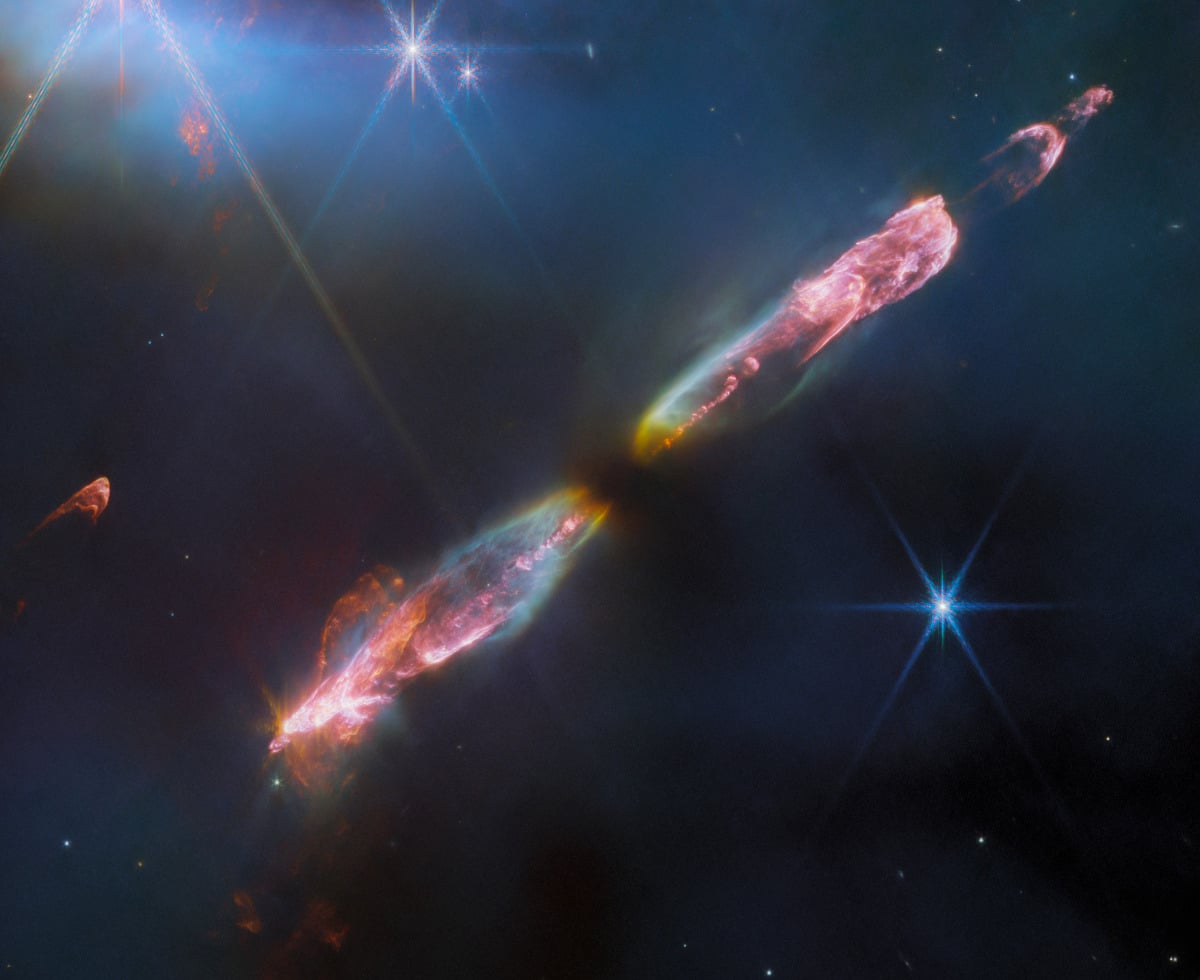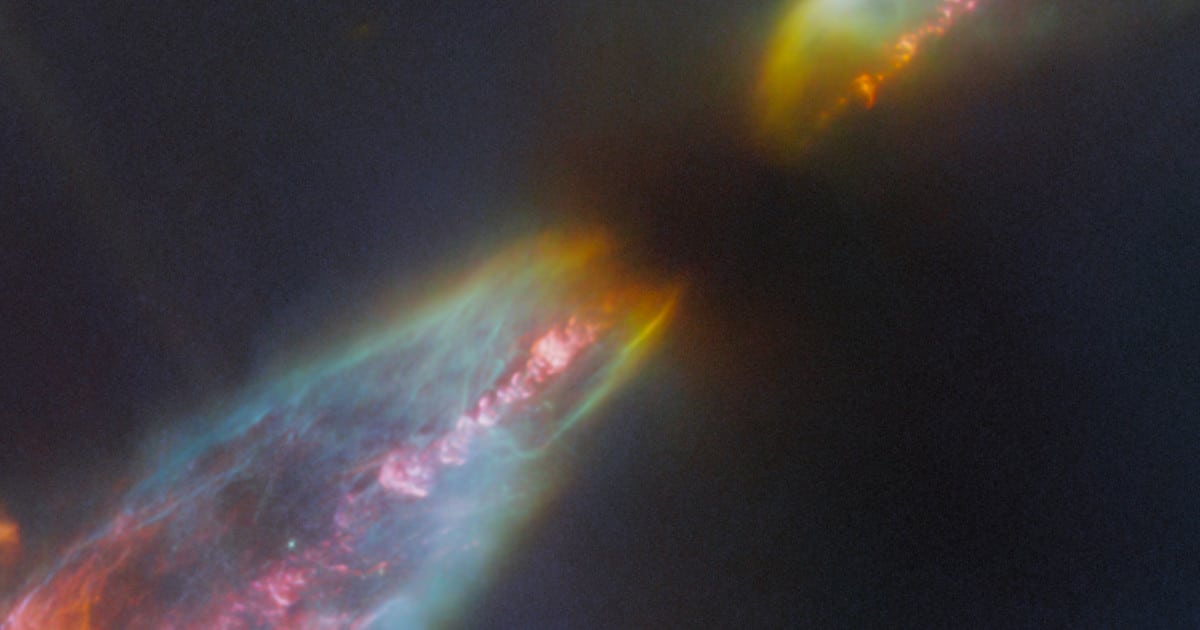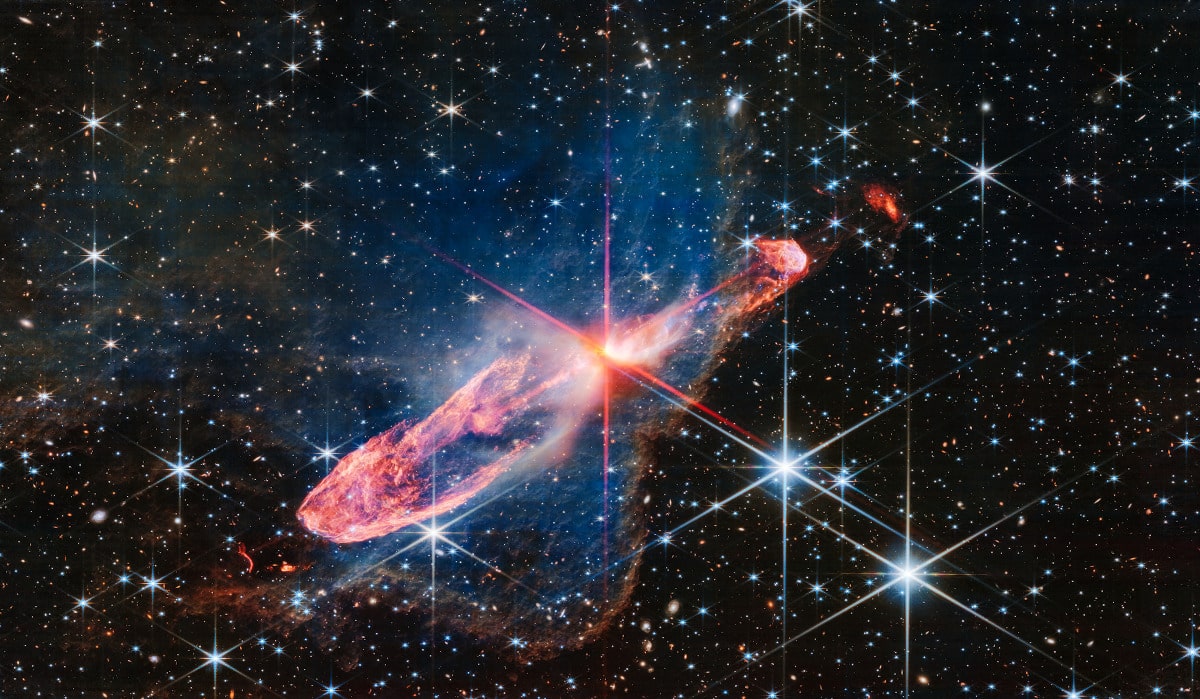To capture this wonderful image, scientists relied on the Webb Telescope’s Near Infrared Camera (NIRCam).
Once again, the images obtained by the JWST turn out to be both tremendously insightful and strikingly beautiful.
Detail of Herbig-Haro 211.

“NASA’s James Webb Space Telescope’s high resolution, near-infrared look at Herbig-Haro 211 reveals exquisite detail of the outflow of a young star, an infantile analogue of our Sun. Herbig-Haro objects are formed when stellar winds or jets of gas spewing from newborn stars form shock waves colliding with nearby gas and dust at high speeds.” Photo: ESA/Webb, NASA, CSA, Tom Ray (Dublin)
Herbig-Haro 46/47, a similar object to Herbig-Haro 211.

Detail of Herbig-Haro 211. Photo: ESA/Webb, NASA, CSA, Tom Ray (Dublin)

Herbig-Haro 46/47, a similar object to Herbig-Haro 211. Photo: NASA, ESA, CSA / Image processing: Joseph DePasquale (STScI)